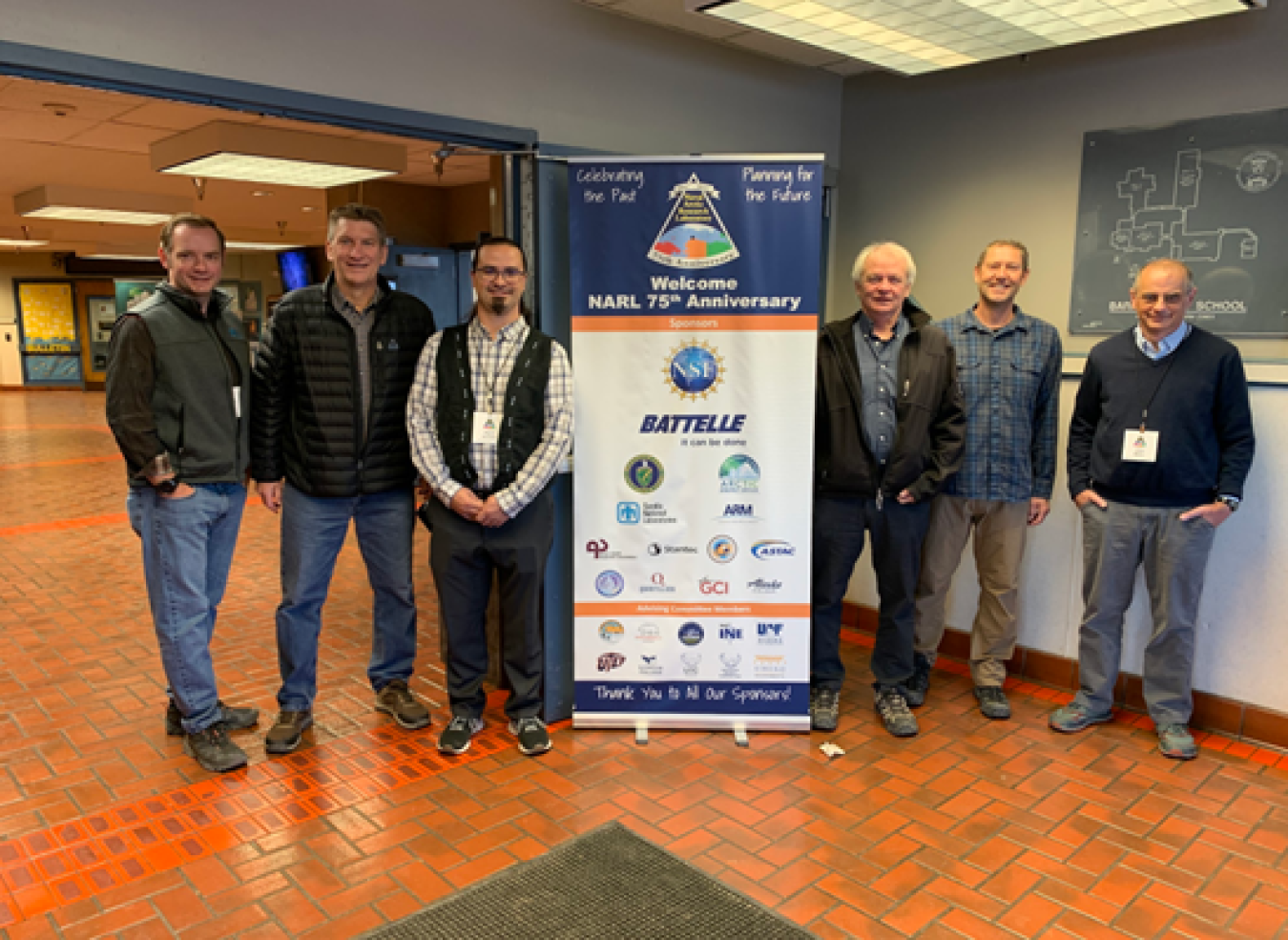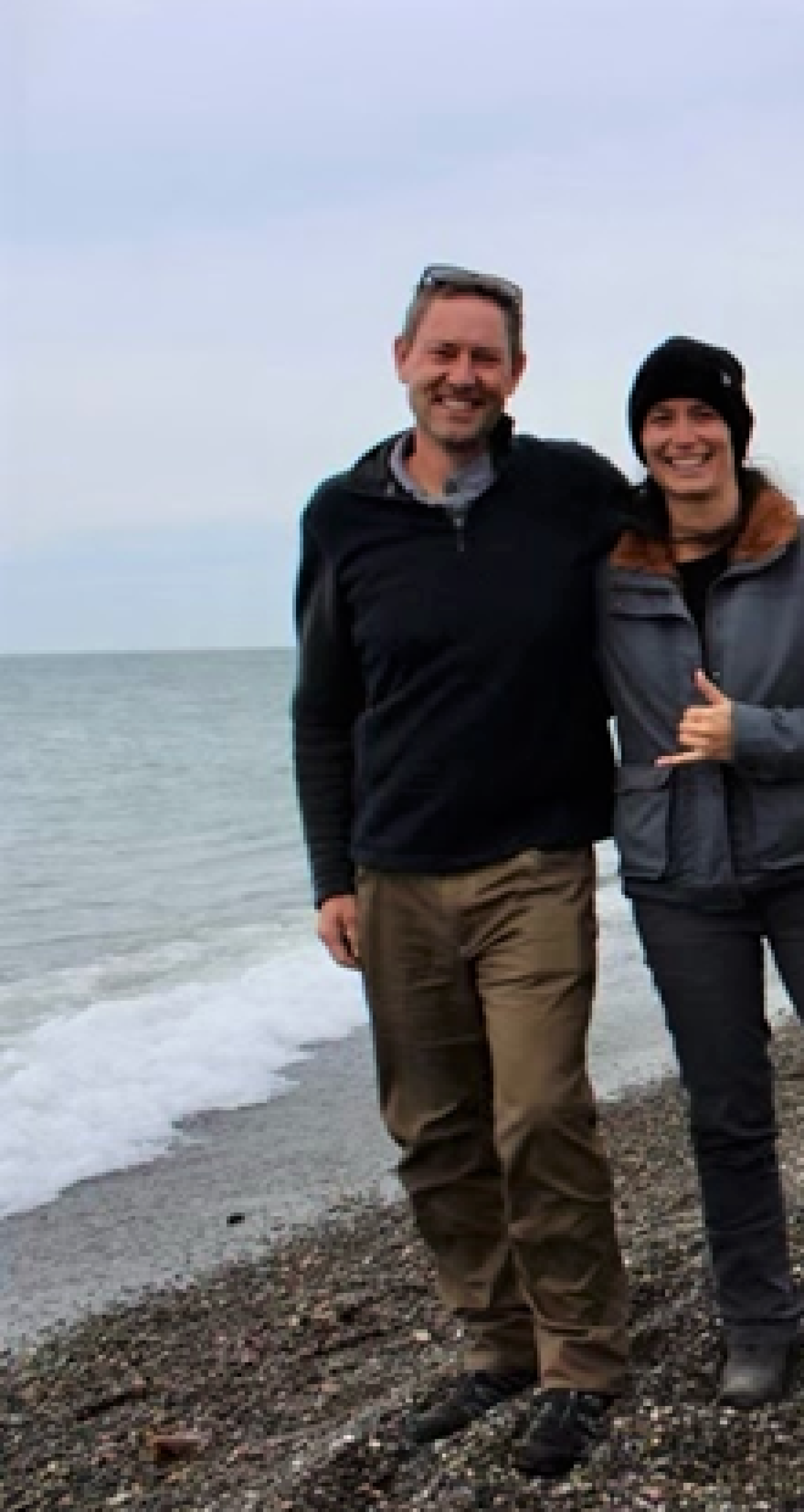75 years of research at the Naval Arctic Research Laboratory, or NARL, in the northernmost spot in the US was celebrated in Utqiaġvik Aug. 1-4. Sandia, Pacific Northwest, and Lawrence Livermore national labs, and the Arctic Energy Office participated.
August 23, 2022
From the study of seals, reindeer and snowy owls to arctic sea ice levels, the Naval Arctic Research Laboratory’s 75 years of research in the northernmost community in the United States was worthy of a big celebration in Utqiaġvik Aug. 1-4. Those participating in the celebration included DOE’s Arctic Energy Office and Office of Science, including Sandia National Lab (SNL), Pacific Northwest National Lab (PNNL), and Lawrence Livermore National Lab (LLNL).
The 75th anniversary of the lab, known as NARL, was an opportunity to celebrate the Arctic research foundation built by the local Inupiaq elders and guest researchers. The community of Utqiaġvik has been ground zero for Arctic research, dating as far back as the first International Polar Year of 1881. That marks the year that the Signal Corps and the Smithsonian sponsored a permanent station for meteorological, magnetic, tidal, and pendulum observation.
In the early 1940s, NARL was established under the U.S. Navy to support petroleum exploration and Arctic research in what is now known as the Naval Petroleum Reserve in Alaska. In 1984, the facility was transferred to the local Ukpeaġvik Iñupiat Corporation (UIC). UIC Science, a subsidiary of UIC, continues to support the operations today.
The week’s events included panels on community perspectives of science at NARL; interdisciplinarity assessment of past research; future of Arctic research; Department of Defense perspective; Iḷisaġvik College; and collaboration on understanding the consequences of Arctic change. The Arctic Slope Regional Corporation, Iñupiat Community of the Arctic Slope, Arctic Slope Native Association, Iḷisaġvik College, and the North Slope Borough provided an ANCSA 101 (Alaska Native Claims Settlement Act) panel discussion. Attendees participated in breakout groups to focus on planning for the next 25 years in Arctic science. Additional activities included tours of Utqiagvik (formerly known as Barrow), Barrow Arctic Research Center, Iñupiat Heritage Center, Iḷisaġvik College, Barrow Search and Rescue facility, and National Oceanic and Atmospheric Administration NOAA facilities.

Major DOE Arctic science projects highlighted at the NARL 75th celebration included the ARM project and NGEE-Arctic, both sponsored by the DOE’s Office of Science.
Event participants included scientists and engineers, Indigenous leaders, Arctic community members, policymakers, government organizations, and businesses. These participants concur wholeheartedly on the critical need to continue Arctic research, given the acceleration of Arctic warming and its implications to the worldwide climate. NARL's deep legacy provides an outstanding foundation for future Arctic science projects to better understand and prepare for changes in this critical region of the globe and beyond.
Matt Heavner

Dr. Matt Heavner was a Senior Advisor to the Arctic Energy Office from 2020 - November 2023. Dr. Heavner came to the Arctic Energy Office from Los Alamos National Laboratory (LANL), where he is working again now as the Climate and Clean Energy Coordinator.
Dr. Heavner first joined LANL in 2000. Matt was a program manager focused on data science applied to critical national security and scientific challenges. Matt was the Assistant Director of Global Security at the White House Office of Science and Technology Policy (OSTP) during 2014-2016. Matt led OSTP efforts on topics including Arctic, space, and a range of nuclear issues. In partnership with the National Security Council, Matt co-chaired multiple White House restricted Interagency Policy Coordination committees. At LANL, Matt served as the project leader for nuclear test ban verification sensors on the Global Positioning Satellite constellation. From 2003-2010, Matt was a Professor of Physics at the University of Alaska Southeast with diverse geophysical interests. Matt earned his PhD in Physics from the University of Alaska Fairbanks and his bachelor degrees in Physics, Mathematics, and Philosophy from Southwestern University.

